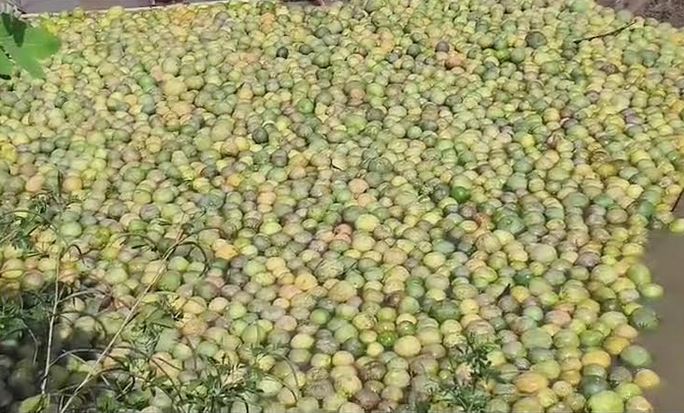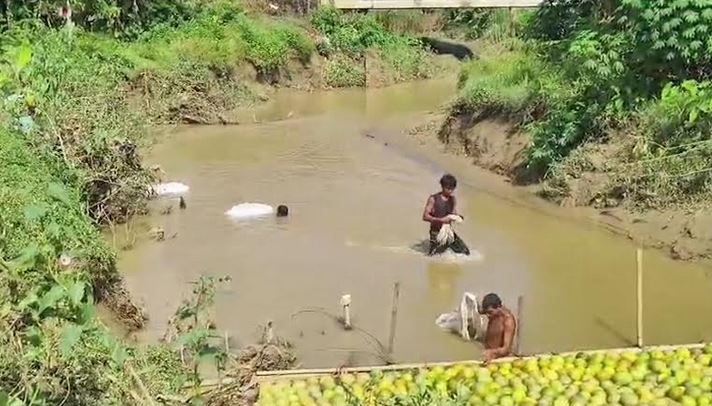News Flash
News Flash

KHAGRACHARI, Oct 15, 2025 (BSS) – From time immemorial, humans have learned to use nature's resources to survive and thrive. These strategies have been a lesson in basic science and daily management.
Currently, it is the season for jambura (a type of citrus fruit) in the hilly areas of Khagrachari. This fruit, hanging from the trees in the hills, are not only delicious but are beloved by both the people of the hills and the plains.
However, collecting this fruits from the mountains and transporting them to the market has never been an easy task. To solve this, local farmers are utilizing river currents to transport jambura, significantly reducing transport costs.
On a field visit to several areas in Khagrachhari, this innovative method was observed in action. At first glance, it might appear that the jambura are floating in the water, spoiled. But in reality, this is not the case. In the hill regions of Khagrachhari and Rangamati, jambura are now being transported via rivers and streams.
Farmers harvest the fruits from the orchards and send them floating in the water. Once the fruits reach designated spots, they are trapped in small bamboo enclosures, where sorting and processing begin before being sent to various parts of the country.

Farmer Asit Boron Chakma told BSS, “Transporting fruit by road from the hilly villages is very costly. But by using the river’s current to float the jambura, carrying costs are significantly reduced. The fruits easily reach the main roads through the flow of the water. This method not only cuts costs but also minimizes damage to the fruits. Moreover, floating the jambura in water makes it easy to identify which ones are spoiled, making the sorting process much easier.”
Kalayen Chakma, another local farmer, explained that the use of natural methods for transporting fruits has increased their profits. “Because we don’t have to bear additional costs, we can send the fruits to distant markets,” he said.
Every day, hundreds of jambura are sent via the rivers and streams to various regions of the country. The jambura collected this way are larger, juicier, and more flavorful, leading to increased demand from buyers.
Local businessman Mohammad Rais Uddin noted that the demand for this hill-grown jambura has increased in cities, including the capital. Jambura is one of the key fruits cultivated in the hill regions. The trees naturally grow without the use of chemical fertilizers or pesticides, making the fruit both healthy and safe.
Nur Mohammad Rasool, an Assistant Agricultural Officer in Mahalchhari, said about the suitability of the region's soil and climate for cultivating jambura.
“Farmers are saving costs by using natural methods to transport the fruits, which is highly positive,” he said.
“These jambura are large, flavorful, and free from pesticides, creating strong demand in the market. We are providing farmers with support for modern farming techniques and market access.”
He added that the sight of jambura floating in the river is not only a testament to nature’s beauty but also a reflection of the ingenuity and resilience of hill farmers.
By harnessing the river's flow for transportation, they have created new opportunities for the local economy while ensuring that jambura reach markets across the country in a cost-effective manner.
This innovative approach is an example of how traditional farming can adapt and thrive by integrating natural resources, opening doors for more sustainable agricultural practices across the region.